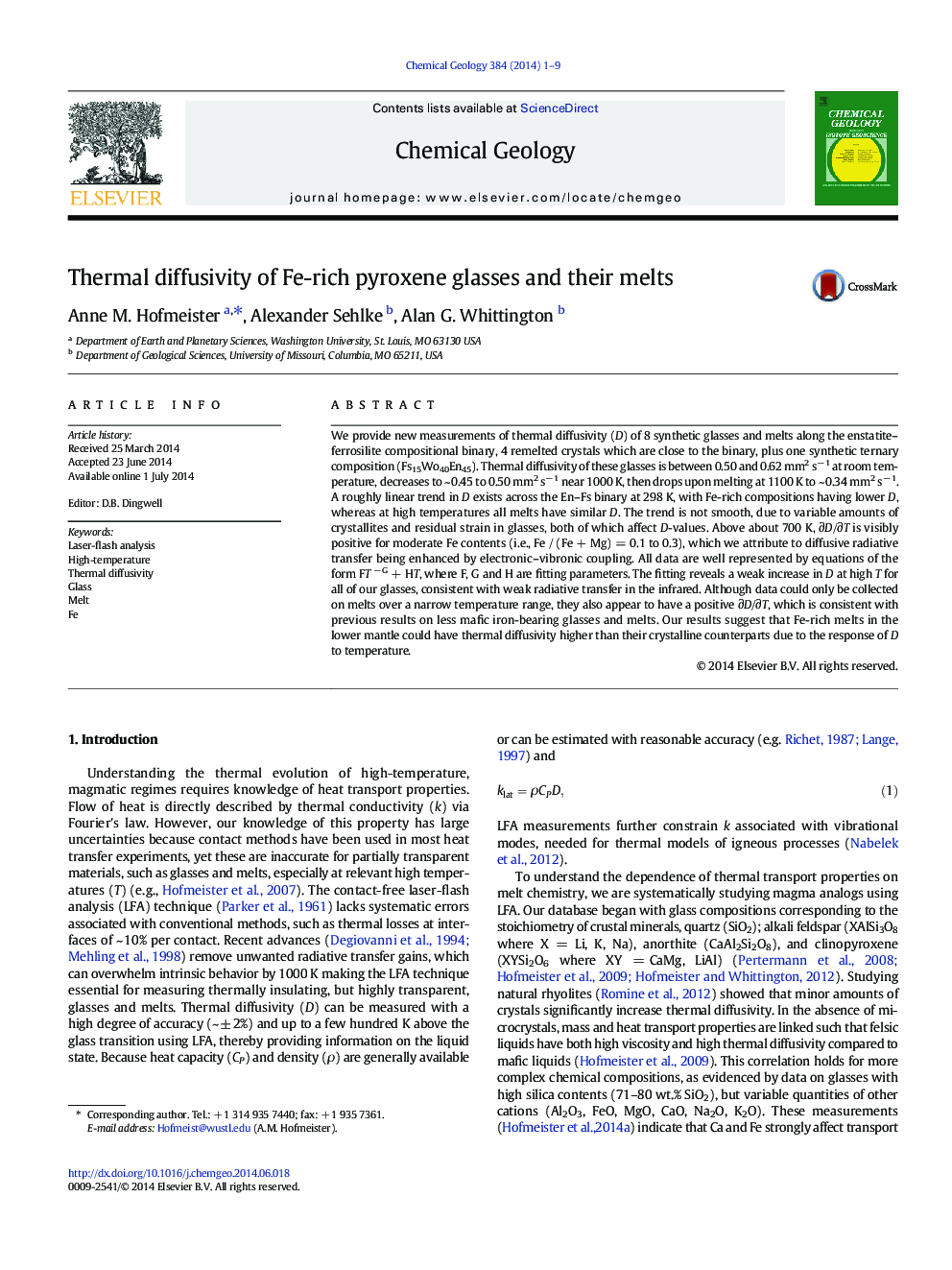| Article ID | Journal | Published Year | Pages | File Type |
|---|---|---|---|---|
| 6436627 | Chemical Geology | 2014 | 9 Pages |
â¢For pyroxene glasses, thermal diffusivity at 298 K decreases with Fe content.â¢Thermal diffusivity of Fe-rich glass increases with temperature at high T.â¢Fe substituting for Mg increases thermal diffusivity of melts in the mantle.
We provide new measurements of thermal diffusivity (D) of 8 synthetic glasses and melts along the enstatite-ferrosilite compositional binary, 4 remelted crystals which are close to the binary, plus one synthetic ternary composition (Fs15Wo40En45). Thermal diffusivity of these glasses is between 0.50 and 0.62 mm2 sâ 1 at room temperature, decreases to ~ 0.45 to 0.50 mm2 sâ 1 near 1000 K, then drops upon melting at 1100 K to ~ 0.34 mm2 sâ 1. A roughly linear trend in D exists across the En-Fs binary at 298 K, with Fe-rich compositions having lower D, whereas at high temperatures all melts have similar D. The trend is not smooth, due to variable amounts of crystallites and residual strain in glasses, both of which affect D-values. Above about 700 K, âD/âT is visibly positive for moderate Fe contents (i.e., Fe / (Fe + Mg) = 0.1 to 0.3), which we attribute to diffusive radiative transfer being enhanced by electronic-vibronic coupling. All data are well represented by equations of the form FT â G + HT, where F, G and H are fitting parameters. The fitting reveals a weak increase in D at high T for all of our glasses, consistent with weak radiative transfer in the infrared. Although data could only be collected on melts over a narrow temperature range, they also appear to have a positive âD/âT, which is consistent with previous results on less mafic iron-bearing glasses and melts. Our results suggest that Fe-rich melts in the lower mantle could have thermal diffusivity higher than their crystalline counterparts due to the response of D to temperature.
